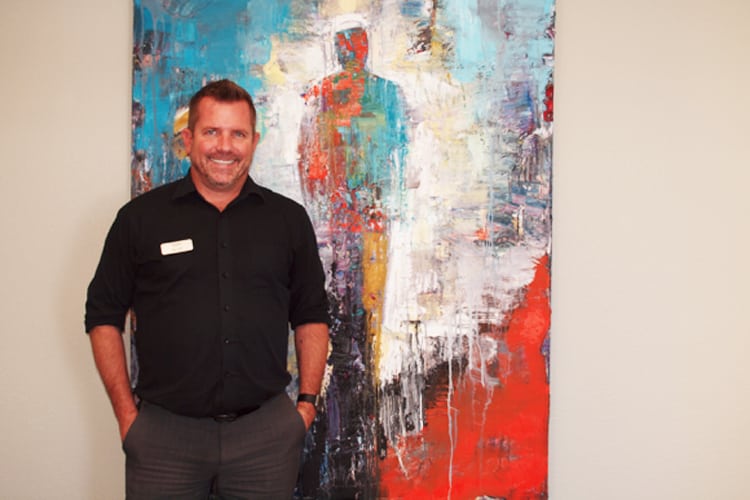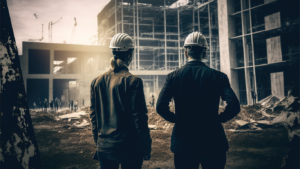From cold brew on tap in the lobby to tanning beds in the gym, multifamily housing developers are doing more to give their properties an extra edge in the age of amenities’ wars.
Some features that may have been deemed superfluous or luxury five years ago are standard to any new development today, according to a report released in 2017 by the National Apartment Association.
The report stated residents are willing to pay more for amenities including swimming pools, landscaping and business centers, but local artist and muralist, Lauren Lee, said developers are tuning in to the economic, communal and cultural value of a different economic investment: public art.
“Developers are starting to work with artists and see them as kind of the heartbeat of the neighborhood and if they work with people who know the space and you consider the future of what that means – it’s huge,” Lee said.
Many cities across the nation, including Scottsdale, are finding success with the expansion of city ordinances which require private developments, including residential developments, to spend a certain percentage of project costs commissioning public art.
Not only does the art add value to the property itself, Francisco Garcia, founder of Phoenix Arts Collective and muralist, said, but the installments deter potential vandals, employ artists and reflect the pulse of a community.
“Artists have paved the way to building communities people want to live in – they build cities like Phoenix into a goldmine,” Garcia said.
Lee has completed multiple privately commissioned public art projects for multifamily housing communities including her “Three Birds in Flight” at Illuminate Apartments on Roosevelt Row and largescale murals at the new Soho Scottsdale Condominiums.
While many artists resent incoming developments, Lee said there is “huge value” in collaboration between local artists and developers.
“It is most useful for artists to do what artists do which is design,” Lee said. “I want to be brought in to the roundtable discussions about design and color choices.”
In addition to an artistic eye, Lee said collaboration with local artists helps the developers tap into the heart and soul of the communities they are entering.
“We don’t live in a vacuum,” Lee said. “I see artists as ambassadors, and it’s important we work with these incoming businesses.”
In 2016, Baron properties opened two new locations on Roosevelt Row: Illuminate and Linear.
Illuminate was built on a lot formerly occupied by the well-known gallery and boutique, greenHAUS, which housed several famous murals including Lee’s original “Three Birds.”
When plans for the development of Illuminate and resulting demolition of greenHAUS were announced, the arts district community banded together signing a petition to save the building and the murals the demolition would take with it.
Despite community efforts, greenHAUS was demolished in 2015. Lee, unlike others, said she approached the development as another opportunity instead of a sore loss.
“When we purchased the land and decided to develop here, we knew we were coming into the arts district,” said Scott Allen, general manager of Linear and Illuminate.
To appeal to the arts community, Allen said the developers commissioned a wide variety of local artists including JB Snyder and Lauren Lee to fill their properties’ interior and exterior with art.
The developers did a call to artists and spent $62,000 commissioning local artists.
Illuminate was nominated and awarded the Developers Award for Best Community Design in 2017 by the Arizona Multihousing Association, which Allen said can be largely attributed to the developers’ focus on the arts.
“I really think because we put a lot of thought into the development when it came to material and finishes it really made us stand above the rest,” Allen said.
Aside from accolades and economic value, Allen said the art is an important part of the community for many residents.
Chris Scragg, a 23-year-old resident at Illuminate, said the art had a strong impact on his initial impression of the property.
“It was definitely the fanciest place I checked out,” Scragg said. “It was different – I had never seen anything like it.”
Throughout his first few months at the apartment, Scragg said he would hang out on the rooftop patio as JB Snyder put the finishing touches on the mural.
“I enjoy the art. I enjoy being right here immersed in it,” Scragg said.
In the search for future apartments, Scragg said he presumes he would take note if art wasn’t a part of the community.
“I imagine that if I am looking at apartments and it doesn’t have this aspect I would feel it. I would think ‘this doesn’t feel like the last place, it doesn’t feel as nice’,” Scragg said.
Founder of Phoenix Arts Collective and muralist, Francisco Garcia, said while he recognizes both the benefits and importance of relationships between artists and developers – it is a partnership that must be navigated with care.
“I have mixed feelings about that type of work because a lot of artists just kind of take jobs, but in order to sustain being socially responsible there needs to be a freedom for artists to share messages in their work that connect to the community,” Garcia said.
With the responsibility on the shoulders of both the artist and developers, Garcia said the art should be more than just eye-catching.
“It is the artists job to preserve history and culture and incorporate messages with social impact in their work and if you aren’t doing that it is almost like you are feeding the community high fructose corn syrup when they should be getting nutrients,” Garcia said.
When communities get pushed out, public art should represent the communities who were there before, Garcia said, and when the work is done with such consideration, “it’s the right thing to do.”
Garcia said the impact art can have on a development is no secret – it is limitless in terms of safety, ownership by the community, cultural visibility and desirability.
“Art is an economic investment that cannot be measured,” Garcia said.





